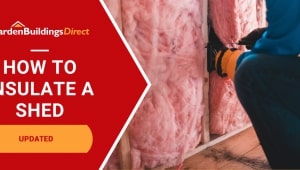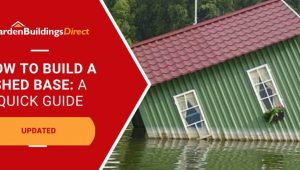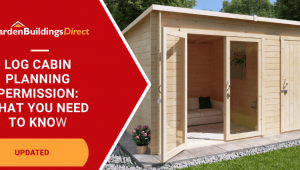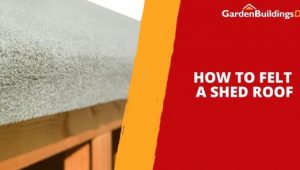Jump to:
Garden rooms are amazing, but when winter comes along they might not stay comfortable. Whether you’re shopping for a garden room or you already have one, here are our expert tips on garden room heating to keep it warm and make the most of your investment.
How to Heat a Garden Room
There’s no one-size-fits-all answer, as this will depend on how you’re using the space and how much time you spend in it. But below are a few good garden room heating rules that work for most setups:
Start with garden room insulation
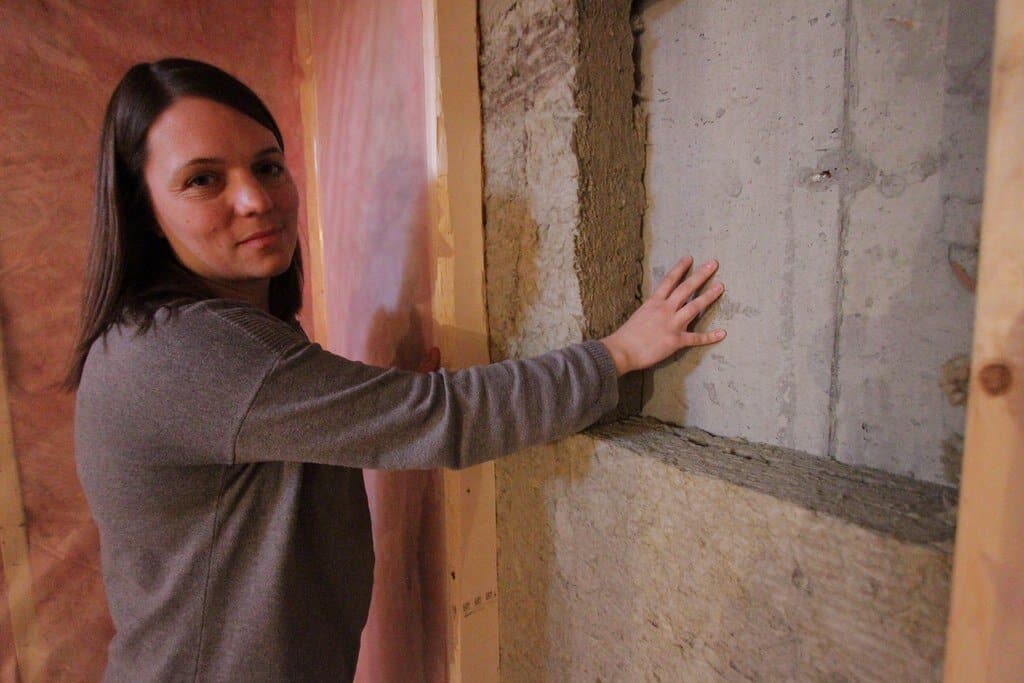
Heating your garden room would be pointless if the heat just seeps straight out of the building. Keeping the heat in is essential, and this calls for insulation.
For the existing structure, have a look around the doors and windows. Can you feel a draught? See any light coming through the edges? Even small gaps can let in cold air and push the warm air out. Fill them in with draft excluder strips or rubber seals.
Thick thermal blinds or lined curtains can also help; rugs or carpet tiles can take the edge off a cold floor.
Add insulation on the walls, floors, and ceiling. You can bring in a professional or do it yourself if you know what you’re doing. It’s not the most exciting part of the job, but it’ll save you a lot in the long run. Sandwich some insulation material between your cabin walls and some new wood panels or plasterboard to create your new thicker interior walls. This is a modification, so it’s undertaken at your own risk.
Choose the right heater for your garden room

When selecting a heater for your garden room, it’s important to consider how often you’ll use the space and the type of activities you’ll be doing there. Whether it’s for daily use as a garden office, a weekend retreat, or a temporary space for seasonal gatherings, the right heating system will ensure comfort and efficiency. Below are several heating options to consider:
Electric Panel Heaters
Best for: Daily use, limited space
Electric panel heaters are an excellent option for garden rooms used regularly, such as garden offices or workshops. They often come in a wall-mounted design, so they don’t take up valuable floor space. These heaters are ideal for smaller rooms or when you’re trying to keep the area tidy and uncluttered.
Key Benefits:
Space-saving: Wall-mounted, they won’t interfere with floor space or layout.
Easy installation: Simply plug them in or wire them directly to a power source.
Efficient and clean: They don’t require fuel storage, making them a cleaner, low-maintenance option.
Temperature control: Many models offer adjustable thermostats and timers for better control of your energy use and comfort levels.
Considerations:
They may not provide as much heat as larger units, so they are better suited for smaller garden rooms.
Oil-Filled Radiators
Best for: Longer-term use, larger rooms
Oil-filled radiators are another great option for keeping your garden room warm, particularly if you plan to spend more time in it or need a more consistent temperature. They take longer to heat up than electric panel heaters, but once warmed, they provide steady, even heat that lasts for hours.
Key Benefits:
Long-lasting heat: Once the oil inside the radiator heats up, it maintains warmth even after the unit is switched off.
Quiet operation: They run quietly, making them suitable for workspaces or relaxation areas where noise is a concern.
Energy efficient: While slow to heat, the unit’s ability to retain heat means it uses less energy over time.
Considerations:
Takes up floor space: Unlike wall-mounted heaters, oil-filled radiators require floor space, so consider their placement carefully to avoid clutter.
Initial heating time: If you need quick heat, this may not be the best option as they take time to warm up.
3. Infrared Panels
Best for: Short bursts of heat, focused heating
Infrared heaters work differently from conventional options. Instead of heating the air, they directly warm people and objects in the room, much like the warmth you feel from the sun. This makes them an excellent choice for a garden gym or hobby room where you may only need to heat a small area or for short periods of time.
Key Benefits:
Immediate warmth: Provides heat almost instantly, ideal for spaces that need short bursts of warmth.
Energy efficient: Since they focus heat directly on objects or people, less energy is wasted in heating the air.
Space-saving: These heaters are often slim and can be mounted on walls or ceilings, keeping floor space clear.
Considerations:
Limited coverage: They don’t heat the entire room, so larger areas may remain cold if you’re not in the immediate vicinity of the panel.
Portable Fan Heaters
Best for: Quick heat in temporary spaces
Portable fan heaters are perfect for quickly warming up a space in a short amount of time. They are small, lightweight, and typically affordable, making them a popular option for heating seasonal living spaces or areas where you won’t be staying for long periods.
Key Benefits:
Fast heating: Can warm a room in minutes, making them great for temporary needs.
Cost-effective: Typically cheaper upfront compared to other types of heaters.
Portability: Easy to move from one room to another or store away when not in use.
Considerations:
Noise: They tend to be noisy, which may not be ideal for spaces where you need quiet, such as a garden office.
Not built for long-term use: Fan heaters can overheat if used for extended periods, so they’re not suitable for continuous use.
One to avoid is anything with an open flame. Even if it’s tempting, it’s not worth the risk in a small enclosed space (we’ll explain why in the safety section).
Bring the warmth all the way down
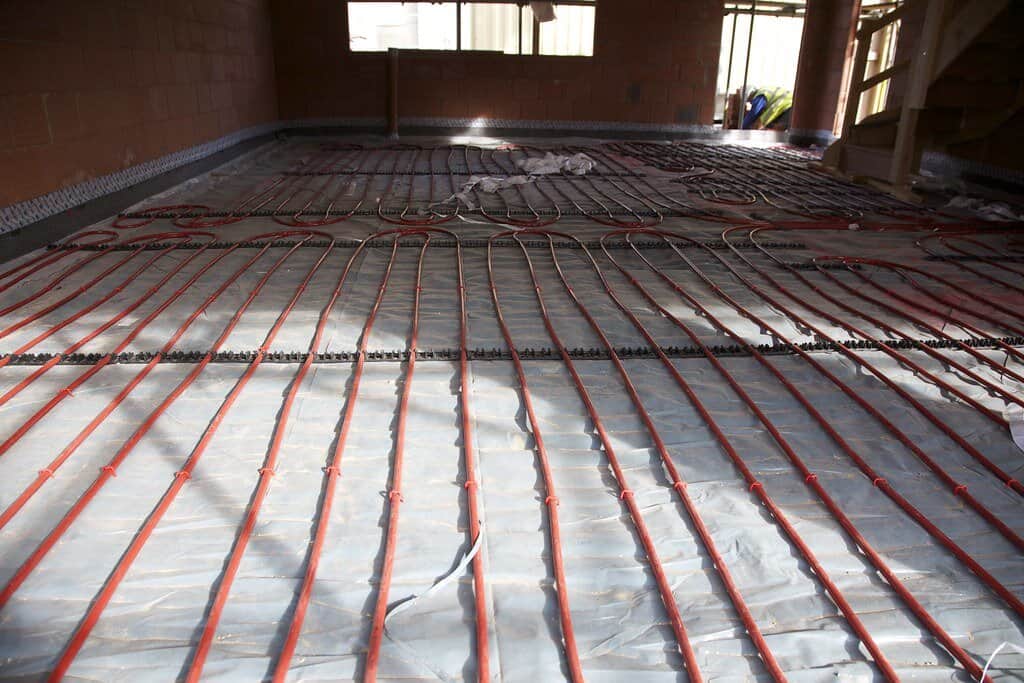
Even if the rest of the room is warm, a cold floor makes the whole space feel less inviting. Don’t let your (or your guests) feet freeze with a rug or some carpet tiles laid down. This should be enough to take the edge off and stop heat escaping through bare floorboards.
And again, if the construction is still underway, underfloor heating is worthwhile. It’s more of an upfront cost, but it spreads heat evenly and keeps the space warm without bulky units taking up room. If you’re good with DIY, some systems are doable—but for others, it’s best to call someone in.
Garden Room Heating: Skip the Fire Hazards
As tempting as it might be to bring in a fire pit or wood burner to “cosy things up,” it’s not worth the risk. Garden rooms don’t usually have chimneys and aren’t built to handle open flames, especially those made from wood. Smoke build-up or stray sparks can become real problems, fast!
The heating options mentioned are safe, but electric heating is the safer route. Whatever you use, just keep it away from furniture, curtains, or anything flammable. It sounds basic, but even a portable heater pushed too close to a cushion can be enough to start trouble.
One more thing: for good electrical heating, you’ll want more than just an extension lead from the house through a window or door (this will let heat out, and isn’t that safe). Read our guide to installing garden room electricity for more information.
Pressure treated garden rooms resist rot, decay, and insect damage, not fire. This applies to most sheds, log cabins, and summer houses. Unless the timber is treated with fire-retardant chemicals, or non-combustible cladding is used.
Still shopping for your new building? Make an informed decision with our Garden Rooms Buying Guide.
Up next on your reading list: Can You Install Under Floor Heating in a Log Cabin?
